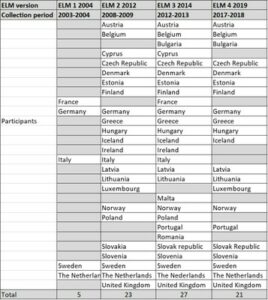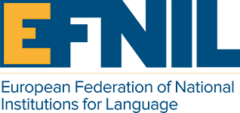European Language Monitor (ELM)
ELM gives you an overview of language legislation and language planning in Europe. It is a detailed and up to date database containing qualitative and quantitative data, links to rulings and legislation and other types of documentation. Using ELM, you can find answers to questions like:
- How many countries have a language law, and what does it regulate?
- What languages are used as language of instruction in higher education, and what is their legal basis?
- What languages are used on company websites?
- Which countries have specific programs to support language technology for their languages, what do they contain, and where can you find them?
You can browse and compare language laws, find information about the status of minority languages, the use of languages in the media and much more. Information is displayed in tables and maps.
The focus is on official regulations and their implementation. We have taken great care to provide comments, quotes, links and translations of legislation wherever possible. The data for ELM is collected every 4 years since 2009.
Target groups of the ELM are primarily policy makers at the national and the European level, linguists, sociologists, publishers, journalists, and other persons who are involved or interested in language development and language policy.
ELM based on a questionnaire which has been filled out by the official institutions of language of each country associated in the European Federation for Institutions of National Languages (EFNIL). The answers contain quantitative and qualitative data such as quotes from legislative texts and other texts in the original language and their translation into English.
ELM contains answers to questions on language planning and language policy divided into 9 main topics:
General questions about each country and its languages
Specific legal regulations
Instruction in and use of languages in primary and secondary education
Instruction in and use of languages at university level
Language use in the media
Language use in business
Dissemination of official languages abroad
Language organisations
Policies for language technology (only in ELM 4 2019)
Although a core of data types will have to be kept constant to allow comparisons and the description of changes, some questions of the repeated surveys are adapted to the changing needs of the users.
ELM 2 covers 23 countries, ELM 3 covers 27, and ELM 4 covers 21 countries. In many cases it is possible to follow the development of language policies and practices in a country for 10 years.

- ELM 2 (2012)
Sabine Kirchmeier-Andersen / Cecilia Robustelli / Jennie Spetz / Gerhard Stickel / Nina Teigland: European Language Monitor (ELM) in: Gerhard Stickel / Michael Carrier (eds.): Education in Creating a multilingual Europe. Peter Lang Verlag, Frankfurt a.M. / Berlin / Bruxelles etc., 2012.
D. Kokoroskos: Interim Report in: Gerhard Stickel / Michael Carrier (eds.): Education in Creating a multilingual Europe. Peter Lang Verlag, Frankfurt a.M. / Berlin / Bruxelles etc., 2012
- ELM 1 (2004) was a pilot project and the data are no longer accessible.
Kirchmeier, Sabine: Trends in European Language Policies With a View to Language Technology. In: Standard Language / Bendrinė kalba, No. 93. Vilnius 2020.
Kirchmeier, Sabine: European Language Monitor – Exploring European Language Policies On-Line. In: Proceedings of the Language Technologies for All (LT4All) , pages 332– 334. Paris, UNESCO Headquarters, 5-6 December, 2019. European Language Resources Association (ELRA) 2019.
The ELM group consists of 5 members most of whom have participated in ELM for more than 10 years.
- Nataša Gliha Komac (Slovenia)
- Annemieke Hoorntje (the Netherlands)
- Cecilia Robustelli (Italy)
- Pernilla Johansson (Sweden)
- Nina Teigland (Norway)
Please note that ELM is updated every 4 years and should primarily be used to get an overview of language legislation and language practices and to enable researchers, politicians and journalists to explore the richness of European practices in this field. If you wish to quote the data, please make sure to check that they are still valid, as language legislation is constantly changing for instance by contacting the relevant official institutions of language listed here.
If you have questions or found any mistakes in the data, please do not hesitate to contact us.
Coordination: Annemieke Hoorntje, ahoorntje@taalunie.org
EFNIL Secretariat: efnil@nytud.hu
